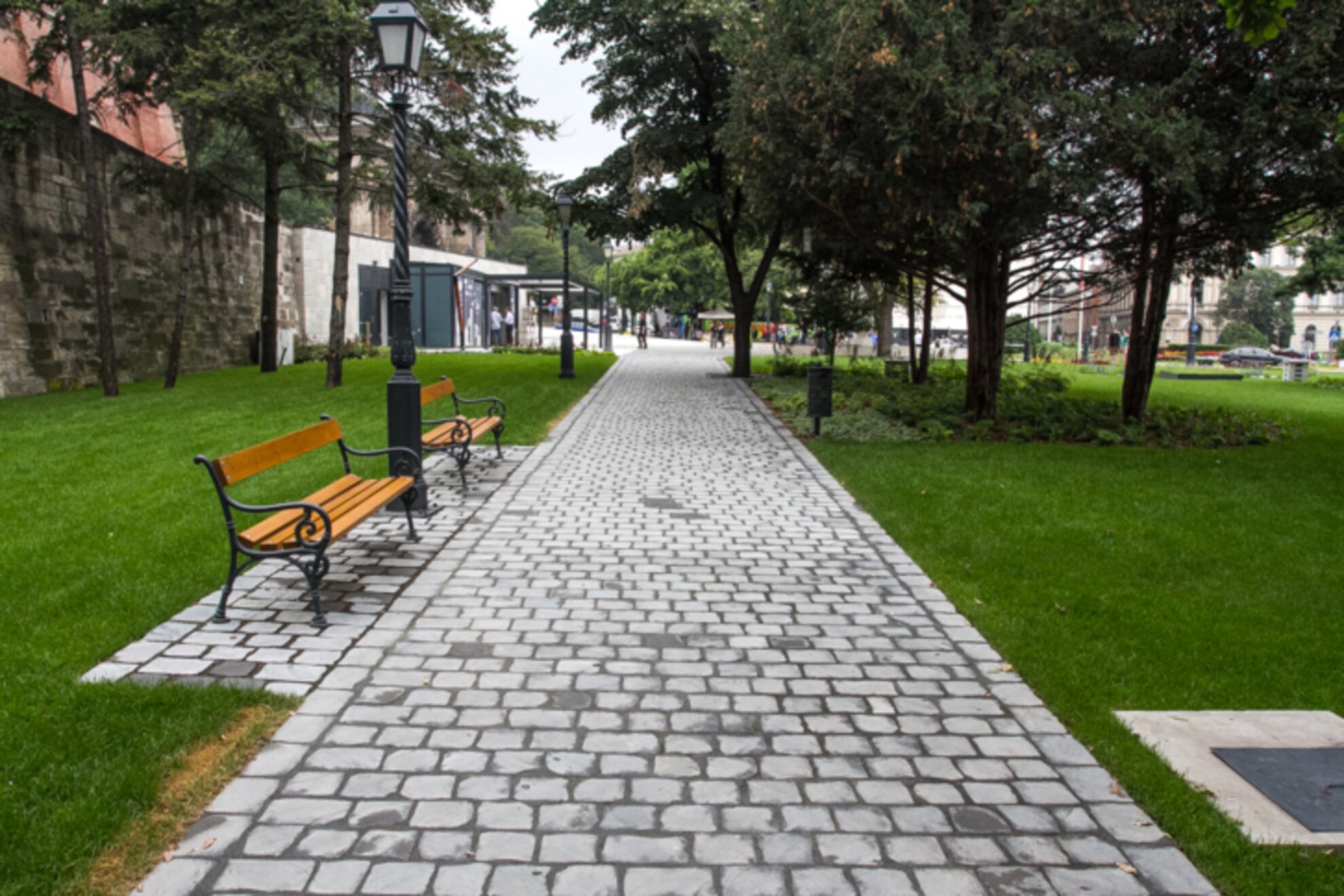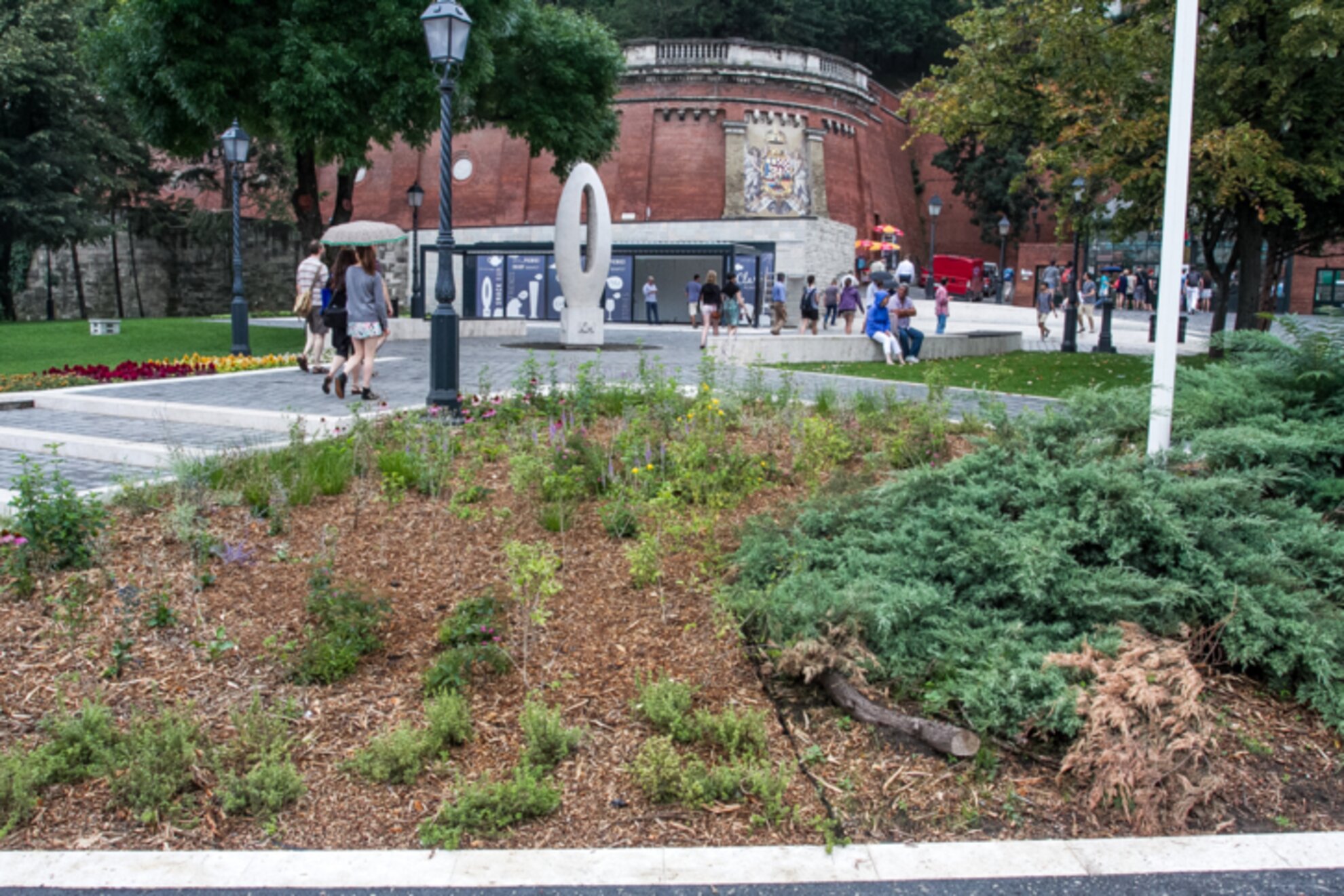Ádám Clark Square is one of the busiest places on the city's Buda side. The Chain Bridge, the tunnel leading beneath Castle Hill, the funicular up to Szt. György Square by the Royal Palace, and several major streets all meet here, making the flower-laden roundabout in the middle an integral part of Budapest’s panorama for decades. However, the former beauty of the square gradually diminished over the years, with several neo-Renaissance buildings that surrounded it facing demolition over time – except for the remarkable Chain Bridge Palace, designed by Miklós Ybl. To bring back the former glory of this Budapest postcard superstar, a major refurbishment began last year, and while some elements are still being spruced up, this summer the facelift was essentially completed.

The square was named after the leader of construction for the Chain Bridge and the designer of the tunnel – Adam Clark, born in 1811 in Edinburgh, Scotland. He came to the country after Count István Széchenyi invited him as part of major plans to upgrade Budapest's infrastructure, and Clark enjoyed his time here so much that after a minor detour, he settled down in Hungary. By the way, the bridge was designed by the English engineer William Tierney Clark – no relation to his Scottish colleague – and upon completion it was rightfully regarded as a marvel of modern construction.

Following the renovation, there are many new elements that enhance the open space of this panoramic square. South of the roundabout we find two landscaped sections: at the part closer to the Danube, wooden planks create a connection between the square and the promenade. The pleasantly simple and green park was renovated with consideration of ecological aspects. The other section, at the bottom of the Buda Castle Hill Funicular, was the focus of more intense construction to improve the facilities here.

The most spectacular elements of the square are the terminus of the funicular, the country’s coat of arms, and the "Zero Kilometre Stone" – the marker from which all Hungarian roadway milestones are gauged from. Previously, a Patrona Hungariae sculpture and another one with a worker and a car wheel functioned as the symbolic starting point of the Hungarian road network; the statue by Miklós Borsos stands in their place since 1975. The sculpture was cleaned up by Péter Módy (one of Hungary's best stone sculpture restorers), while the area around the statue received a basalt cube cover. In addition, new benches and a drinking fountain also serve the convenience of weary tourists and residents.

On the landscaped area, the gardeners replaced around 1,200 square meters of lawn, planted new shrubs on a 400-square-meter area, and planted some annual flowers on 30 square meters. The park will be watered by an automatic irrigation system.

The square now also has a café pavilion with a terrace that can also be used in the winter, so tourists do not have to buy refreshments from illegal vendors anymore and can rest in a civilized environment. Lastly, the tunnel became much safer, and the upper ledge was installed with a handrail. All in all, the square became prettier and more useful, but this is only the beginning: as part of the renovation of Várkert Bazaar, construction on Chain Bridge Street will also be completed soon.




